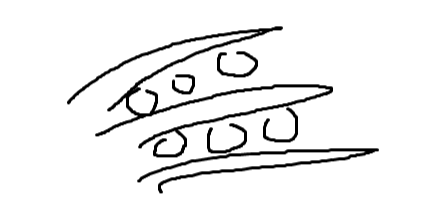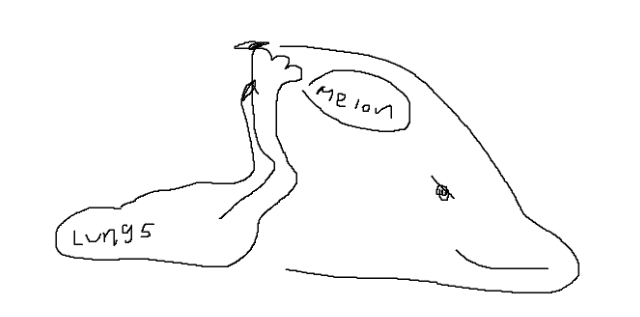
Marine Mammals
Endothermic
Most have some form of insulation (blubber, fur, hair)
Live birth, young fed milk via mammary glands
Great ability to dive
Binocular vision
Expels every ounce of air in their lungs (fully collapses their lungs)
Twice as many red blood cells, or hemoglobin
IRBC = 390 Million
Muscle contains more myoglobin than regular mammals
Can dive for 45 minutes to 2+ hours
Shunts blood: delivers blood to specific parts of the body, like the brain, heart, and muscles
Bradycardia = the process by which your heart rate drops dramatically
Dropping heart rate to 3-5bpm
Sea Otters
No blubber, but they have very thick fur
The thickest fur in the animal kingdom
100,000 hairs in a cm²
This prevents their skin from touching cold water
Increased/higher metabolic rate → They must eat 25-30% of their body weight everyday
Are able to use tools

Polar Bears
Only found/live in the Arctic
Very good swimmers
Webbed paws
Skin is very dark, nearly black
Will absorb more heat from the sun
Fur/hair is hollow
Traces of photosynthetic organisms that rely on the sun are in the fur that allows heat to travel to the dark skin, keeping them warm even in cold climates
Manatees vs. Dugongs
Manatees | Both | Dugongs |
|---|---|---|
Found in the Eastern U.S. to Western Africa Paddle-like tail | Both are very slow swimmers They are susceptible to being hit by boats Herbivores | Found in Eastern Africa to the Pacific Islands Fluke like tail |
Seals, Sea Lions, and Walruses
Seals | Sea Lions | Walruses | |
|---|---|---|---|
Neck | Short | Long/Flexible | Long |
Ears | Internal ears | Internal ears with external ear flap | Internal |
Front flippers | Stubby, only used to steer | Long front flippers, used for propulsion | Long front flippers, used for propulsion |
Hind flippers | Longer, used for propulsion | Short, used for steering | Short, used for steering |
Cetaceans
Toothed Whales: Odontoceti
One blowhole
Teeth
Round heads
Baleen whales: Mysticeti
2 blowholes
Baleen
Flat, telescopic heads
Both organisms have the ability to create echolocation, but the vast majority are the odontocetes

Ignore that this whale is evil but in order for them to echolocate:
The blowhole must be closed
The flaps vibrate behind the melon filled with oil
The waves are sent out and they return to the whale
The whale can then identify shape, distance, and size
The energy is picked up by their lower jaw
Marine Mammals
Endothermic
Most have some form of insulation (blubber, fur, hair)
Live birth, young fed milk via mammary glands
Great ability to dive
Binocular vision
Expels every ounce of air in their lungs (fully collapses their lungs)
Twice as many red blood cells, or hemoglobin
IRBC = 390 Million
Muscle contains more myoglobin than regular mammals
Can dive for 45 minutes to 2+ hours
Shunts blood: delivers blood to specific parts of the body, like the brain, heart, and muscles
Bradycardia = the process by which your heart rate drops dramatically
Dropping heart rate to 3-5bpm
Sea Otters
No blubber, but they have very thick fur
The thickest fur in the animal kingdom
100,000 hairs in a cm²
This prevents their skin from touching cold water
Increased/higher metabolic rate → They must eat 25-30% of their body weight everyday
Are able to use tools

Polar Bears
Only found/live in the Arctic
Very good swimmers
Webbed paws
Skin is very dark, nearly black
Will absorb more heat from the sun
Fur/hair is hollow
Traces of photosynthetic organisms that rely on the sun are in the fur that allows heat to travel to the dark skin, keeping them warm even in cold climates
Manatees vs. Dugongs
Manatees | Both | Dugongs |
|---|---|---|
Found in the Eastern U.S. to Western Africa Paddle-like tail | Both are very slow swimmers They are susceptible to being hit by boats Herbivores | Found in Eastern Africa to the Pacific Islands Fluke like tail |
Seals, Sea Lions, and Walruses
Seals | Sea Lions | Walruses | |
|---|---|---|---|
Neck | Short | Long/Flexible | Long |
Ears | Internal ears | Internal ears with external ear flap | Internal |
Front flippers | Stubby, only used to steer | Long front flippers, used for propulsion | Long front flippers, used for propulsion |
Hind flippers | Longer, used for propulsion | Short, used for steering | Short, used for steering |
Cetaceans
Toothed Whales: Odontoceti
One blowhole
Teeth
Round heads
Baleen whales: Mysticeti
2 blowholes
Baleen
Flat, telescopic heads
Both organisms have the ability to create echolocation, but the vast majority are the odontocetes

Ignore that this whale is evil but in order for them to echolocate:
The blowhole must be closed
The flaps vibrate behind the melon filled with oil
The waves are sent out and they return to the whale
The whale can then identify shape, distance, and size
The energy is picked up by their lower jaw
 Knowt
Knowt